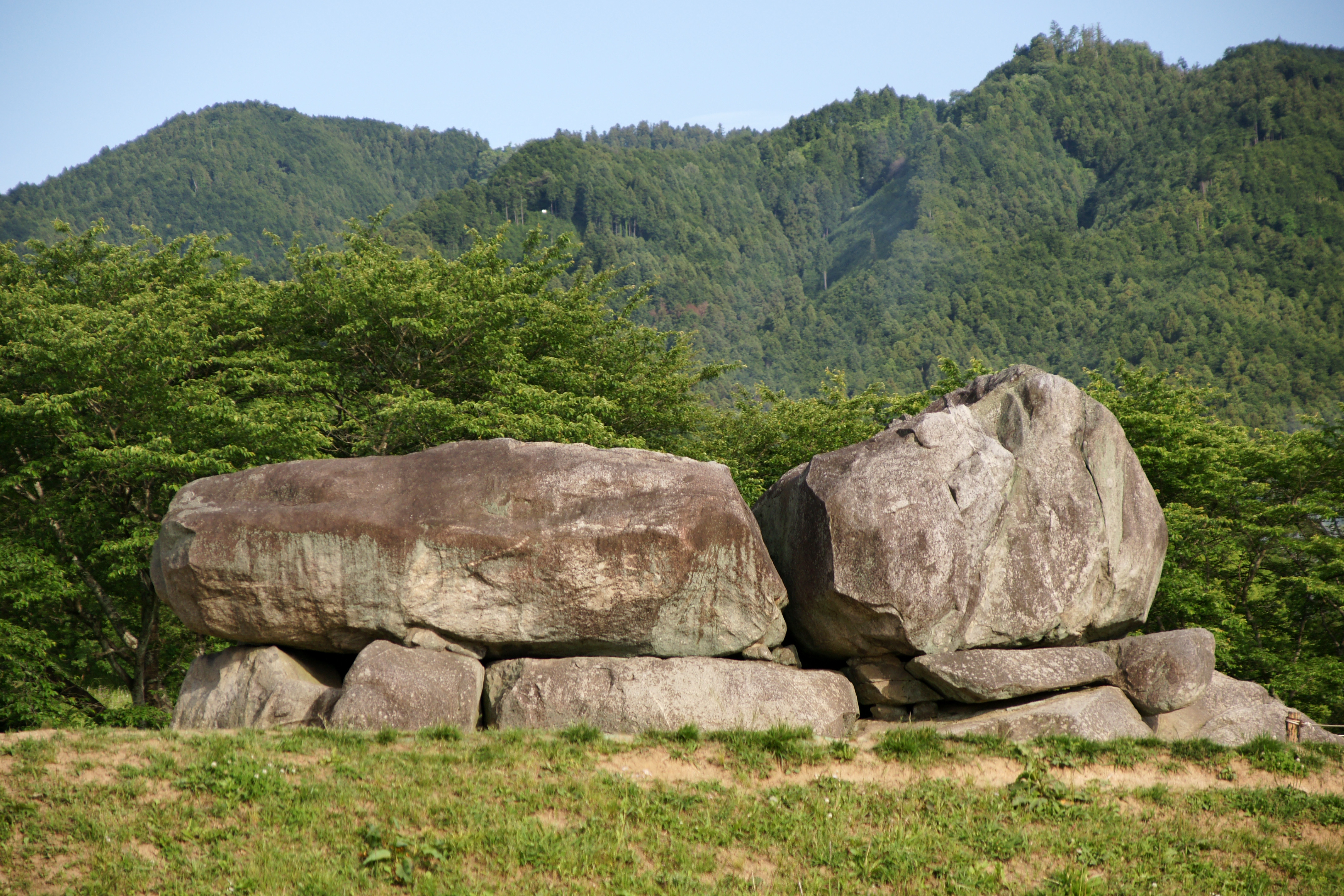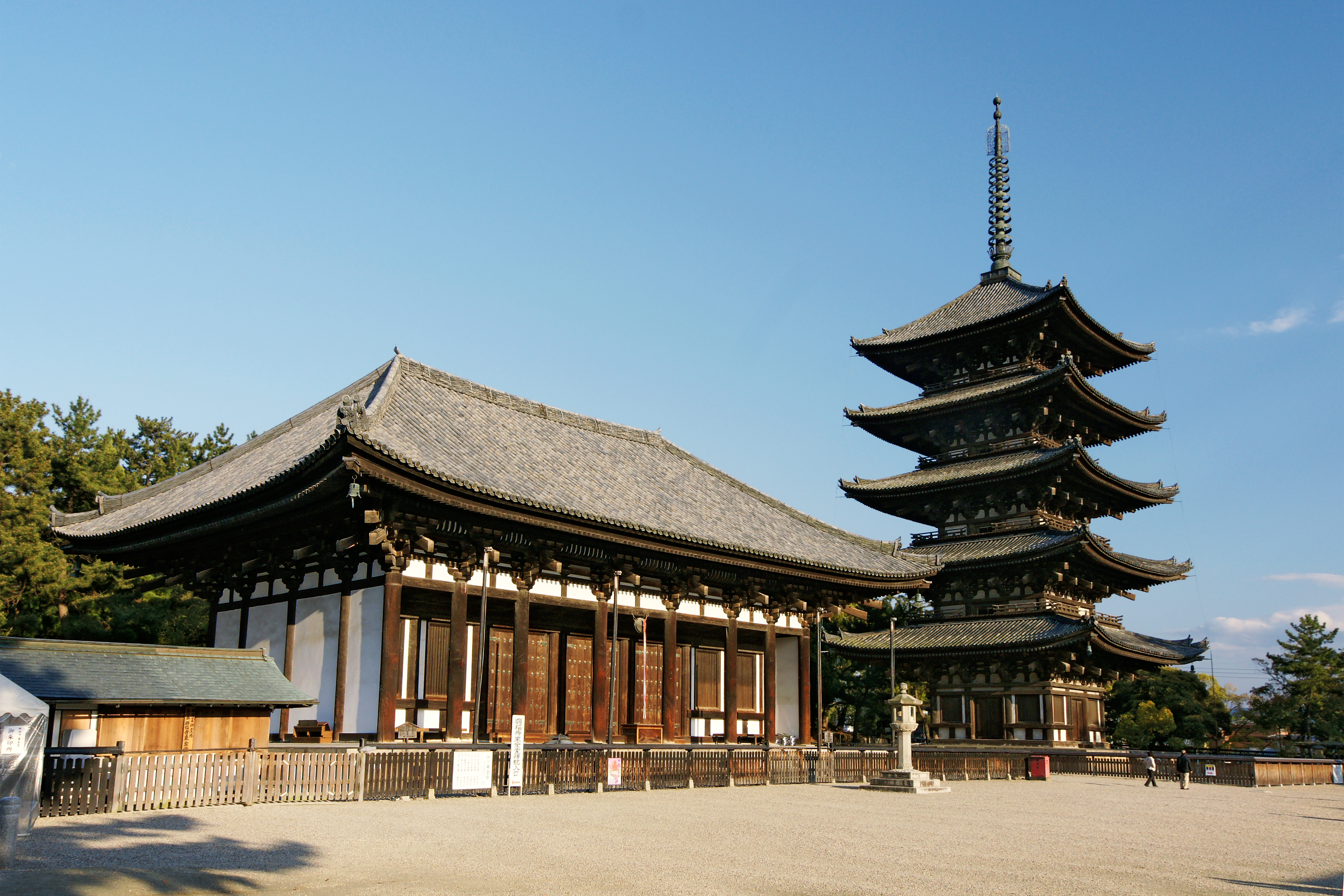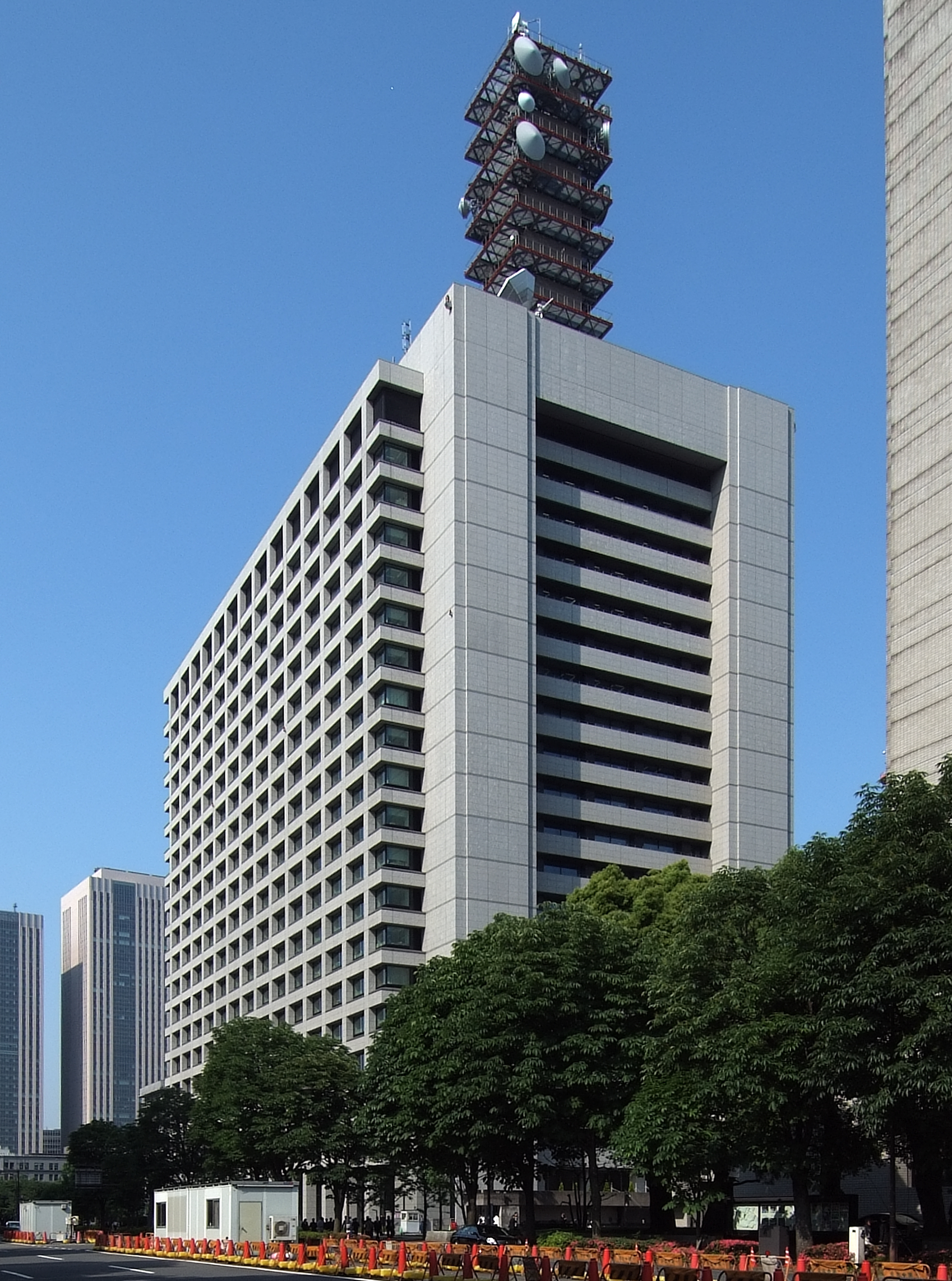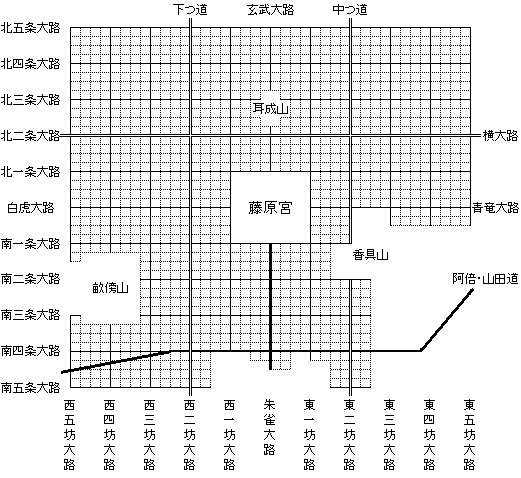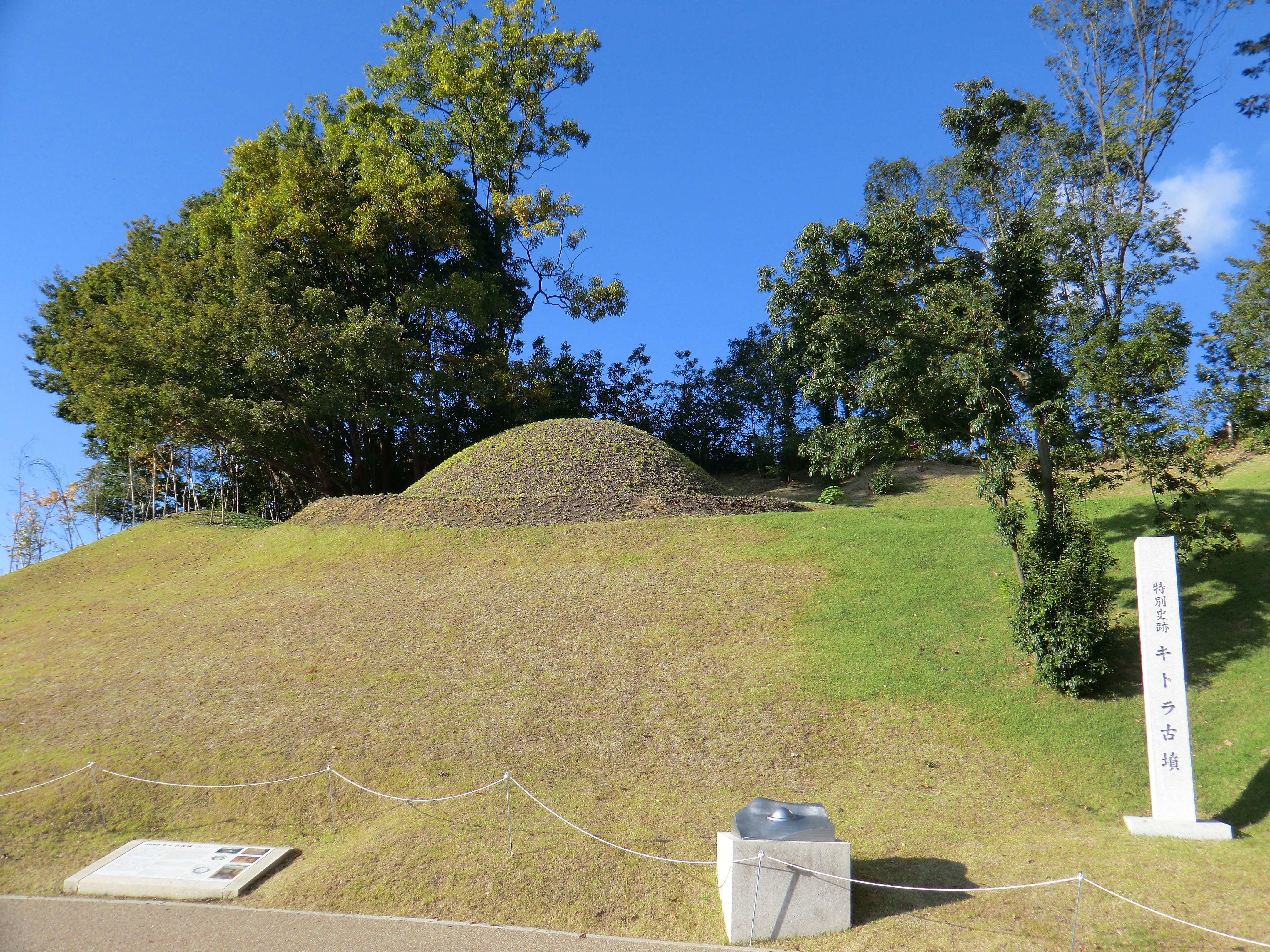|
Asuka Historical National Government Park
is a National Government Park established in Asuka, Nara Prefecture, Japan in 1974. The park comprises five areas: the Amakashi-no-Oka Area, where there is an observatory with a view over the old capitals of Asuka and Fujiwara-kyō and of Yamato Sanzan; the Iwaido Area, similarly with views to Yamato Sanzan as well as over the terraced rice fields of "Inner Asuka"; the Ishibutai Area; the Takamatsuzuka Area; and the Kitora Tumulus Area. See also * Asuka-Fujiwara * Asuka Historical Museum The is a historical museum in Okuyama, Asuka, Nara Prefecture, Japan. The museum was founded in 1975 and is a unit of the Nara National Research Institute for Cultural Properties. Collections The Asuka Historical Museum primarily preserves and ... References External links *Asuka Historical National Government Park*Asuka Historical National Government Park Parks and gardens in Nara Prefecture Asuka, Nara National Government Parks of Japan Protected areas established in 1974 1 ... [...More Info...] [...Related Items...] OR: [Wikipedia] [Google] [Baidu] |
Ishibutai Kofun
is a stone '' kofun'' or tumulus of the Asuka period in the east of Shimanoshō, Asuka, Nara Prefecture, Japan. The kofun is believed to be the tomb of Soga no Umako. It occupies an area of , and is the largest known megalithic structure in Japan. The kofun is also known as the Kofun. Name The name of the ''kofun'' in Japanese is a combination of two words, the first, , meaning "stone", and the second, , meaning " stage". The name of the ''kofun'' therefore originates in its resemblance to a large stone stage. The Ishibutai ''kofun'' has been known by this name at least as early as the Tokugawa period, as evidenced by its entry in the ''Saigoku sanjūsansho meisho zue'', a large guide to Buddhist pilgrimage sites written by Kanenari Akatsuki in 1853. Association with Soga no Umako The Ishibutai Kofun is inferred to be the tomb of Soga no Umako (559? - 626), and his death during the reign of Empress Suiko is recorded in the '' Nihon Shoki''. :Summer, 5th month, 20th day. ... [...More Info...] [...Related Items...] OR: [Wikipedia] [Google] [Baidu] |
Asuka, Nara
is a village located in Takaichi District, Nara Prefecture, Japan. As of April 1, 2017, the village has an estimated population of 5,681, with 2,170 households, and a population density of . The total area is . Asuka is the land where ancient palaces were located. There are strict rules governing construction in this historic town. Asuka can be reached from Okadera or Asuka Station on Kintetsu Yoshino Line train line. Although it's outside Asuka, Kashiharajingū-mae Station in neighboring Kashihara has service on the Kintetsu Kashihara Line, Minami Osaka Line and Yoshino Lines. By car, Asuka is on Route 169. History ''For the ancient Asuka, see Asuka period and Asuka, Yamato.'' In 1956, the village of Asuka (明日香) was founded as a result of a merger of three villages, Sakaai, Takechi and Asuka (飛鳥村). In 1966, Asuka was proclaimed a "historic town", as defined by the national Special Arrangement for Preservation of Historic Sites Laas well as Kyoto, N ... [...More Info...] [...Related Items...] OR: [Wikipedia] [Google] [Baidu] |
Nara Prefecture
is a Prefectures of Japan, prefecture of Japan located in the Kansai region of Honshu. Nara Prefecture has a population of 1,321,805 and has a geographic area of . Nara Prefecture borders Kyoto Prefecture to the north, Osaka Prefecture to the northwest, Wakayama Prefecture to the southwest, and Mie Prefecture to the east. Nara (city), Nara is the capital and largest city of Nara Prefecture, with other major cities including Kashihara, Nara, Kashihara, Ikoma, Nara, Ikoma, and Yamatokōriyama. Nara Prefecture is located in the center of the Kii Peninsula on Japan's Pacific Ocean coast, and is one of only eight landlocked prefectures. Nara Prefecture has the distinction of having more UNESCO World Heritage listings than any other prefecture in Japan. History Nara Prefecture region is considered one of the oldest regions in Japan, having been in existence for thousands of years, and is widely viewed as the Japanese cradle of civilization. Like Kyoto, Nara was one of Imperial Japa ... [...More Info...] [...Related Items...] OR: [Wikipedia] [Google] [Baidu] |
Japan
Japan ( ja, 日本, or , and formally , ''Nihonkoku'') is an island country in East Asia. It is situated in the northwest Pacific Ocean, and is bordered on the west by the Sea of Japan, while extending from the Sea of Okhotsk in the north toward the East China Sea, Philippine Sea, and Taiwan in the south. Japan is a part of the Ring of Fire, and spans an archipelago of 6852 islands covering ; the five main islands are Hokkaido, Honshu (the "mainland"), Shikoku, Kyushu, and Okinawa. Tokyo is the nation's capital and largest city, followed by Yokohama, Osaka, Nagoya, Sapporo, Fukuoka, Kobe, and Kyoto. Japan is the eleventh most populous country in the world, as well as one of the most densely populated and urbanized. About three-fourths of the country's terrain is mountainous, concentrating its population of 123.2 million on narrow coastal plains. Japan is divided into 47 administrative prefectures and eight traditional regions. The Greater Tokyo Ar ... [...More Info...] [...Related Items...] OR: [Wikipedia] [Google] [Baidu] |
National Government Parks
Japan's are parks or open spaces established by the Ministry of Land, Infrastructure, Transport and Tourism under the . These parks are different from the country's network of National Parks, which represent areas of outstanding natural significance and are declared by the Minister of the Environment under the . History The first National Government Park, Musashi Kyūryō National Government Park, was started in 1968 to commemorate the hundredth anniversary of the Meiji Restoration. The park opened its door to the public in July, 1974. Parks In total there are seventeen National Government Parks, listed below in chronological order: *Musashi Kyūryō National Government Park, opened in 1974 *Asuka Historical National Government Park opened in 1974 (includes also the Nara Palace Site Historical Park) * Yodogawa River National Government Park opened in 1977. * Uminonakamichi Seaside National Government Park opened in 1981. * Okinawa Commemorative National Government Park opened ... [...More Info...] [...Related Items...] OR: [Wikipedia] [Google] [Baidu] |
Ministry Of Land, Infrastructure, Transport And Tourism (Japan)
The , abbreviated MLIT, is a ministry of the Japanese government.国土交通省設置法 , Ministry of Internal Affairs and Communications. It is responsible for one-third of all the laws and orders in Japan, and is the largest Japanese ministry in terms of employees, as well as the second-largest executive agency of the Japanese government after the Ministry of Defense. The ministry oversees four external agencies including the Japan Coast Guard and the Japan Tourism Agency. Overview< ...
|
Asuka, Yamato
was the Imperial capital of Japan during the Asuka period (538 – 710 AD), which takes its name from this place. It is located in the present-day village of Asuka, Nara Prefecture. Etymology Some of the many theories of what the place was named after include the bird common crossbill, or ''isuka'' in Japanese, or local geological features, e.g. 洲処 (''suka'', meaning sandbar, sandbank or delta) or 崩地 (''asu'') + 処 (''ka''). Or it may have been named in honor of Asuka (or Ashuku) Nyorai, the Japanese equivalent of Akshobhya, one of the Five Buddhas of Wisdom, who is still worshiped in Asuka-dera (Asuka Temple), the Asuka-niimasu-jinja (the shrine for his manifestation as a Shinto god), and several other structures from those days. Archaeology Archaeology projects continue to uncover relics from these ruins. Recent discoveries in the area include Wado coins, believed to be some of the oldest coins in Japan, and paintings in the Kitora and Takamatsuzuka Kofun, o ... [...More Info...] [...Related Items...] OR: [Wikipedia] [Google] [Baidu] |
Fujiwara-kyō
was the Imperial capital of Japan for sixteen years, between 694 and 710. It was located in Yamato Province (present-day Kashihara in Nara Prefecture), having been moved from nearby Asuka. However, the name Fujiwara-kyō was never used in the '' Nihon Shoki''. During those times it was recorded as Aramashi-kyō (新益京). As of 2006, ongoing excavations have revealed construction on the site of Fujiwara-kyō as early as 682, near the end of the reign of Emperor Tenmu. With a brief halt upon Emperor Tenmu's death, construction resumed under Empress Jitō, who officially moved the capital in 694. Fujiwara-kyō remained the capital for the reigns of Emperor Monmu and Empress Genmei, but in 710 the Imperial court moved to the Heijō Palace in Nara, beginning the Nara period. History Fujiwara was Japan's first capital built in a grid pattern on the Chinese model (条坊制 ''jōbō-sei''); recent investigation has revealed that the city covered an area of roughly 5 km, much l ... [...More Info...] [...Related Items...] OR: [Wikipedia] [Google] [Baidu] |
Yamato Sanzan
or "the three mountains of Yamato", in Kashihara, Nara Prefecture, Japan, are , , and . Celebrated in Japanese poetry, they have been jointly designated a Place of Scenic Beauty. Jimmu, first Emperor of Japan, is said to have built his palace on the southeast side of Mt Unebi; he is enshrined at Kashihara Jingū. Archaeological study in the 1990s has shown that, rather than their surrounding Fujiwara-kyō on three sides, the "palace-city" was so large as to encompass the three mountains. File:Kaguyama-mt.jpg, Mt Kagu (152.4 m) File:Kashihara-unebi.JPG, Mt Unebi (199.2 m) File:Miminashi-yama.jpg, Mt Miminashi (139.7 m) See also * Monuments of Japan * List of Special Places of Scenic Beauty, Special Historic Sites and Special Natural Monuments * Meisho * Utamakura is a rhetorical concept in Japanese poetry. Definition is a category of poetic words, often involving place names, that allow for greater allusions and intertextuality across Japanese poems. enables poets ... [...More Info...] [...Related Items...] OR: [Wikipedia] [Google] [Baidu] |
Takamatsuzuka Tomb
The or "Tall Pine Tree Ancient Burial Mound" in Japanese is an ancient circular tomb in Asuka village, Nara Prefecture, Japan. History The tomb is thought to have been built at some time between the end of the 7th century and the beginning of the 8th century. It was accidentally discovered by a local farmer in the 1960s. Description The mound of the tomb was built of alternating layers of clay and sand. It is about in diameter and high. Excavation yielded a burial chamber with painted fresco wall paintings of courtiers in Goguryeo-style garb. The paintings are in full color with red, blue, gold, and silver foil representing four male followers and four serving maidens together with the Azure Dragon, Black Tortoise, White Tiger, and Vermilion Bird groups of stars. The paintings are designated a National Treasure. For whom the tomb was built is unknown, but the decorations suggest it is for a member of the Japanese royal family or a high-ranking nobleman. Candidates incl ... [...More Info...] [...Related Items...] OR: [Wikipedia] [Google] [Baidu] |
Kitora Tomb
The is an ancient tumulus ('' kofun'' in Japanese) located in the village of Asuka, Nara Prefecture, Japan. The tomb is believed to have been constructed some time between the 7th and early 8th centuries, but was only discovered in 1983. A small stone chamber, the Kitora Tomb is a little over 1 metre in height and width and about 2.4 metres long, just large enough to bury a single person. The four walls are aligned with the cardinal points of the compass, and respectively feature the Black Divine Tortoise of the North, the Azure Dragon of the East, the Red Phoenix of the South, and the White Tiger of the West. On the ceiling of the chamber there is also an astronomical chart that has been the focus of much research and debate by scholars in the field of archaeoastronomy. In addition, the 12 zodiac animals-headed figures with human body are painted on the wall, which may be one of the oldest remaining zodiac murals in East Asia. Fragments of a lacquered wooden coffin, torn ... [...More Info...] [...Related Items...] OR: [Wikipedia] [Google] [Baidu] |
Asuka-Fujiwara
Asuka-Fujiwara: Archaeological sites of Japan’s Ancient Capitals and Related Properties is a cluster of archaeological sites from in and around the late sixth- to early eighth-century capitals of Asuka and Fujiwara-kyō, Nara Prefecture, Japan. In 2007, twenty eight sites were submitted jointly for future inscription on the UNESCO World Heritage List under the ii, iii, iv, v, and vi criteria. Currently, the submission is listed on the Tentative List. Since 2011, the Cultural Landscape of the Asuka Hinterland has been protected as one of the Cultural Landscapes of Japan. An area of 60 ha is also protected within the Asuka Historical National Government Park. Related artefacts are housed at the Asuka Historical Museum. Sites See also * Asuka period * List of National Treasures of Japan (archaeological materials) * World Heritage Sites in Japan Japan accepted the UNESCO World Heritage Convention on 30 June 1992. As of July 2021, twenty-five properties have been inscri ... [...More Info...] [...Related Items...] OR: [Wikipedia] [Google] [Baidu] |

